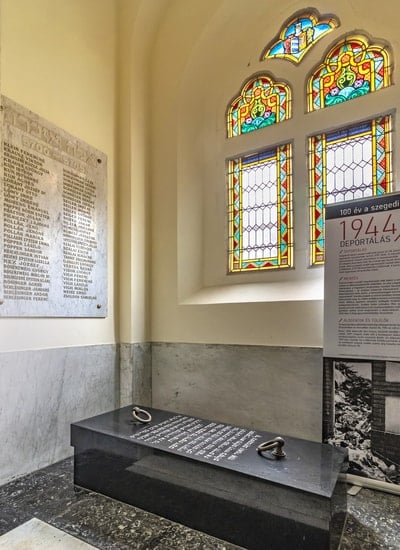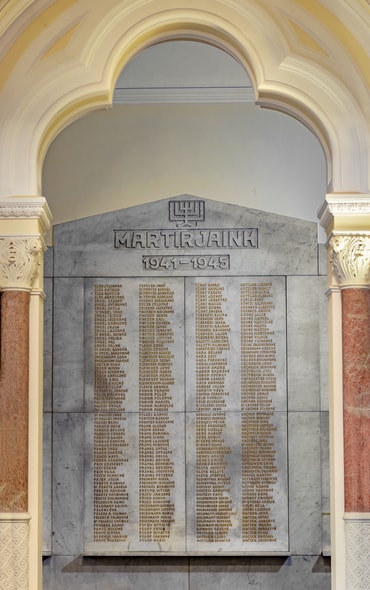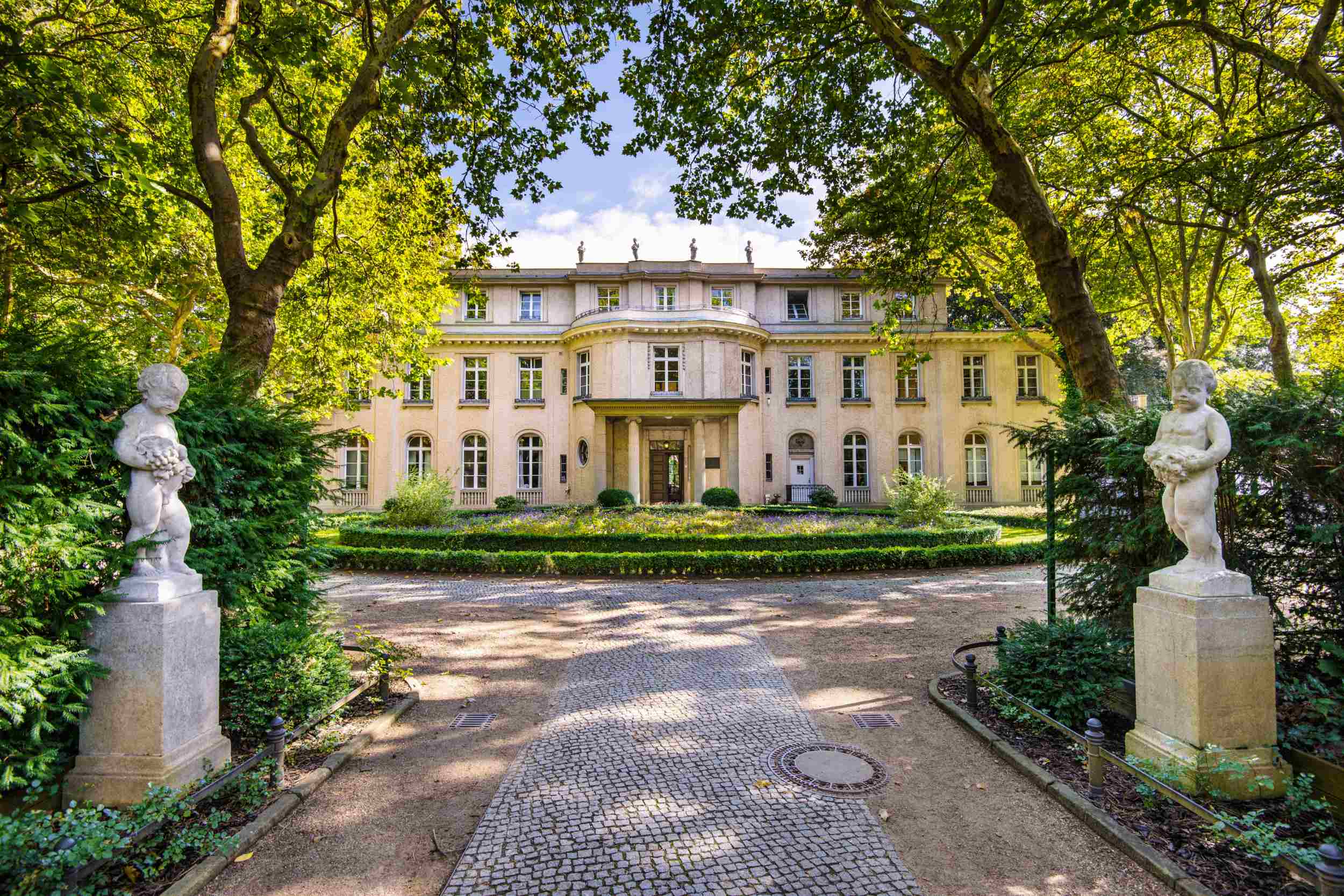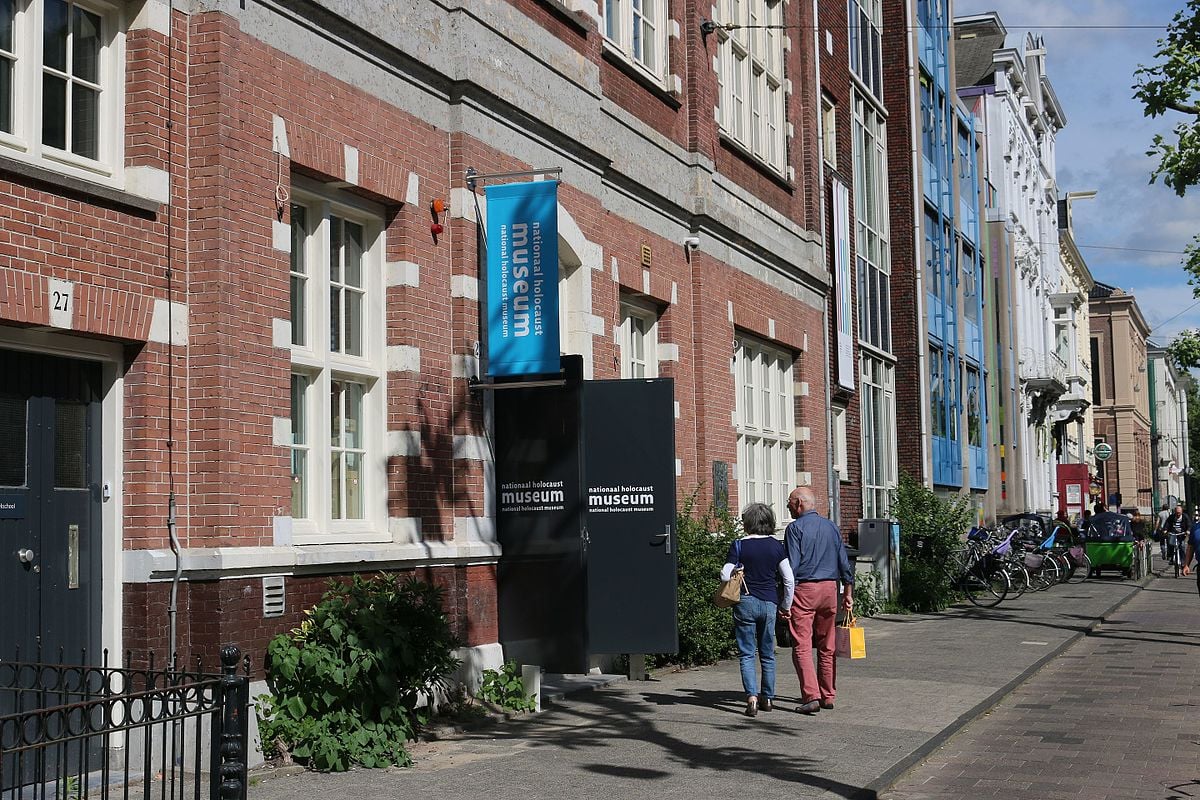A short report appeared on the inauguration of the two symbolic memorial tombs of deported Jews in the local daily newspaper Délmagyarország on 23 September 1947: “There were almost 2000 Jews who were destroyed by fascist madness, who not even had a symbolic grave. They were symbolically buried in black marble coffins in the hall of the synagogue by the Jewish Community.” The memorial tombs can be found in the entrance hall of the New Synagogue
Site Tag: Holocaust
Memorial Boards of the Soah Victims
In the following years of the Soah, the most important issues were restarting the religious and community life by the surviving Jewish community members in Hungary. Nevertheless, special emphasis was put on individual and collective grief and remembrance, which were eased by different kinds of memorial events and soon erected monuments. The memorial can be found in the entrance hall of the New Synagogue
House of The Wannsee Conference
The House of Wannsee Conference is located on the Wannsee River, on the outskirts of West Berlin. This historical landmark was built in 1915 for Ernst Marlier, a prominent businessman. He was arrested in 1940 for embezzlement and sold his property. During the Nazi era, the Wannsee House came to be used by the SS Security Service, the Nazi intelligence service. It was at the villa that SS officers planned the future of the Third Reich. After the war, the house was used as a residence, until the August Bebel Institute acquired the building in 1947. It was then used as a school and hostel for the Berlin Social Democratic Party, until 1988 when it became the memorial site it is today.
The Wannsee Conference was a meeting of senior government officials of Nazi Germany and Schutzstaffel (SS) leaders, held in the Berlin suburb of Wannsee on 20 January 1942. The purpose of the conference, called by the director of the Reich Security Main Office SS-Obergruppenführer Reinhard Heydrich, was to ensure the co-operation of administrative leaders of various government departments in the implementation of the Final Solution to the Jewish question, whereby most of the Jews of German-occupied Europe would be deported to occupied Poland and murdered. Conference participants included representatives from several government ministries, including state secretaries from the Foreign Office, the justice, interior, and state ministries, and representatives from the SS. In the course of the meeting, Heydrich outlined how European Jews would be rounded up and sent to extermination camps in the General Government (the occupied part of Poland), where they would be killed.
Auschwitz survivor, Joseph Wulf, is really to thank for the inauguration of the Wannsee House as a memorial site. Mr. Wulf published the first comprehensive collection of documents from the Nazi regime, and suggested creating a documenter center in the Marlier villa. Although Wulf had wide public support, the Berlin Senate was slow to accept his proposal. Sadly, Joseph Wulf did not see his vision realized, as the man committed suicide in 1974.
National Holocaust Museum
The National Holocaust Museum is located across the street from the Hollandsche Schouwburg. It too serves as a testament to the Dutch Jews who suffered during WWII. The museum contains in-depth exhibitions which explain the events of the holocaust to an international audience. The museum routinely hosts the well known Dutch painter, producer and actor, Jeroen Krabbé, and his exhibition titled, ‘The Demise of Abraham Reiss’ (De ondergang van Abraham Reiss). The museum is the first of its kind in the Netherlands, showcasing life before, during, and after Germany’s occupation, and giving a full overview of Jewish life during these years. The National Holocaust Museum has plans for expansion and growth in the coming years, so be sure to check out this important site.
The museum is housed in a former teacher training college on Plantage Middenlaan, next door to the “Crèche” where Jewish children were held before being deported to Westerbork. About 600 children were saved with the help from different Resistance groups, as well as teachers from the training school. These unimaginable stories are illustrated in the museum.





